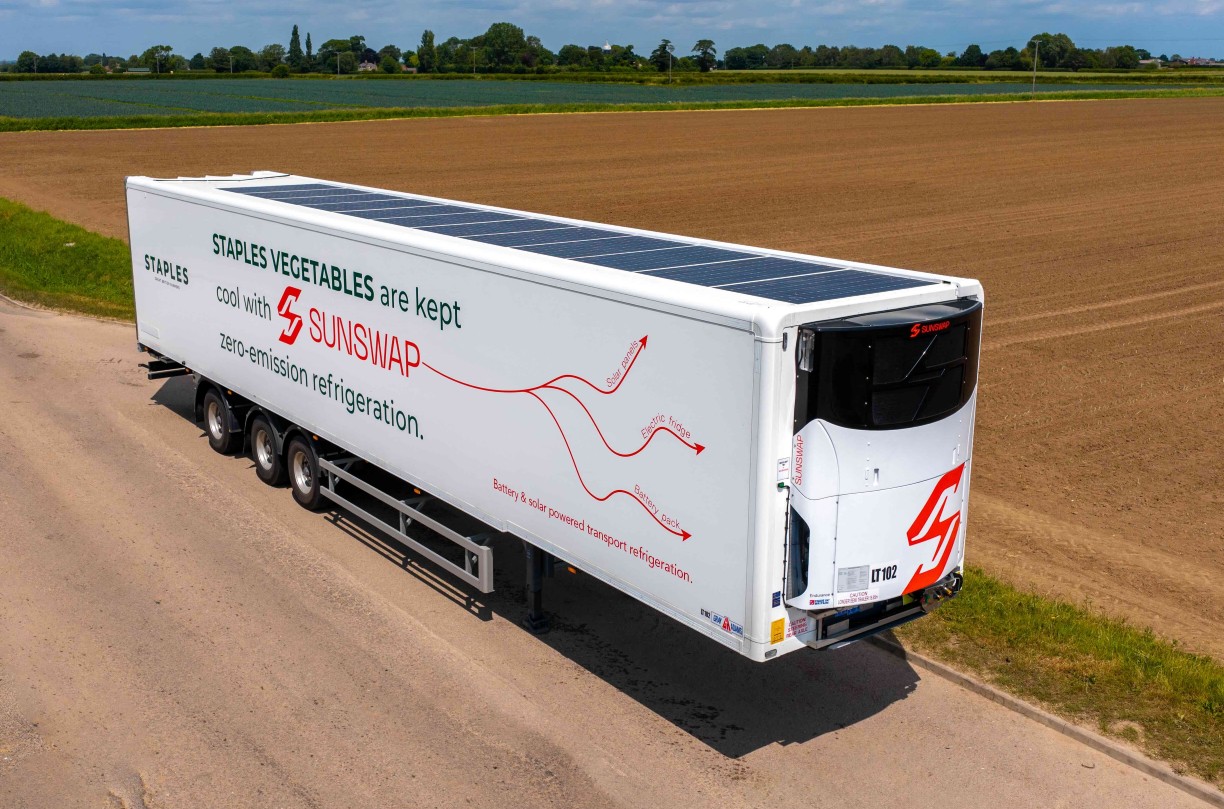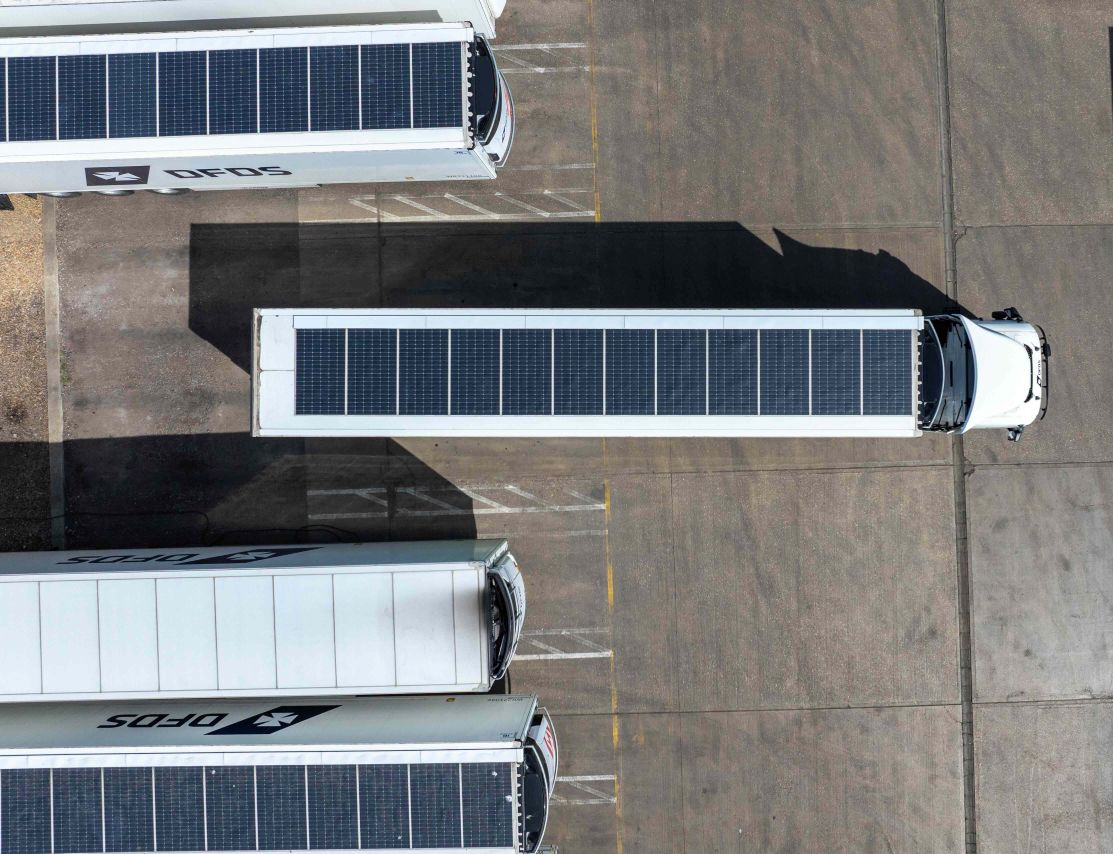Transport Refrigeration & Cold Chain Explained – How Goods Go From Farm to Table
.webp)
Refrigerated transport is essential to the modern food supply chain but it is rarely given a second thought by most people. It's the technology that keeps our fruits fresh, our dairy products chilled, and our frozen goods icy as they travel from farms, and production facilities to our local stores and ultimately, our tables. Without it, our food choices would be severely limited and there would be much greater levels of food waste.
Transport Refrigeration Explained: The Basics
At its core, transport refrigeration is a mobile system designed to maintain specific temperatures for perishable goods during transit. In its most simple terms, it is a fridge attached to a trailer or truck.
Unlike a home refrigerator, these units must operate in a constantly changing environment. For example, they have to battle the outside temperatures year-round (including heatwaves), handle frequent door openings by drivers, all while staying on the move.
The key components of a transport refrigeration unit (TRU) typically include:
- Compressor: The heart of the system, pumping refrigerant through the unit
- Condenser: Where heat is released from the refrigerant
- Evaporator: Where the refrigerant absorbs heat from the trailer or truck
- Expansion valve: Keeps the refrigerant flow in check, letting through the right amount
- Power source: This used to rely mostly on diesel engines, but electric-power is starting to take the wheel more and more.
These components work together to achieve refrigeration. The compressor pressurises the refrigerant, turning it into a hot gas. This gas then flows through the condenser, where it releases heat and becomes a liquid. The liquid refrigerant then passes through the expansion valve, which reduces its pressure, causing it to evaporate and become very cold. This cold refrigerant then flows through the evaporator, absorbing heat from the cargo area and keeping it cool.
A common misconception is that refrigeration systems produce cold air; in reality, they work by removing warm air from the space. They are heat moving units.
The Cold Chain Journey
The cold chain is the temperature-controlled supply chain that keeps perishable products at the right temperature from production to consumption. This could be milk, vegetables, ice cream, livestock, or medicine.
Let's follow a journey of a carton of milk
- Farm: Our journey begins at a dairy farm. As soon as the milk is collected, it's quickly cooled to prevent bacterial growth.
- Processing and packaging: The milk is transported in refrigerated tankers to a processing plant. Here it goes through pasteurisaton and packing - all while being kept at the right temperature.
- Distribution centers and cold stores: Large refrigerated trucks then transport the packaged milk to distribution centers. These warehouses or cold stores are essentially giant refrigerators, keeping products at optimal temperatures until they're ready for the next leg of their journey.
- Last-mile delivery: Smaller refrigerated vehicles then pick up the milk and other perishables for delivery to local stores.
- Retail/End Consumer: Finally, the milk arrives at your local store, where it's stored in refrigerated display cases until you purchase it and take it home to your own refrigerator.
Throughout this entire journey the carton of milk must be kept at a consistent temperature, typically between 0-4°C (32-39°F). Any deviation could compromise its safety and quality. This is where the importance of reliable, efficient transport refrigeration comes in - it's not just about keeping things cold, it's about maintaining precise temperatures across varying conditions to ensure that the food that reaches our tables is fresh, safe, and of the highest quality.
Challenges in Transport Refrigeration
When you are concerned with keeping goods cool on the move, there are a number of challenges you face:
- Range of ambient temperatures and climates: TRUs must maintain consistent internal temperatures regardless of what is happening around them.
- Energy consumption and environmental impact: Traditional diesel-powered TRUs consume fuel and, therefore, emit greenhouse gases. With the shift towards greener supply chains there is pressure to reduce carbon footprint while maintaining performance.
- Regulatory compliance: There are regulations in place to govern food safety and around emission levels from diesel engines.
- Maintenance and reliability issues: Mobile refrigeration units endure constant vibration and harsh conditions. Ensuring reliability while minimising downtime for maintenance is an ongoing challenge.
Innovations in Transport Refrigeration
The industry is evolving rapidly to meet current challenges:
- Transition from diesel to electric systems: Fully electric TRUs offer zero direct emissions and quieter operation, addressing environmental concerns and strict urban noise regulations.
- Integration of renewable energy: Solar panels are being incorporated into TRU designs, providing an additional power source that is zero-emission and can extend the range of electric TRUs
- Smart monitoring and predictive maintenance: Telematics and sensors allow real-time monitoring of TRU performance. The tech is becoming much smatert which allows for tracking of performance.
Sunswap’s battery and solar powered transport refrigeration unit, Endurance is at the forefront of these innovations. Its fully electric, solar-assisted design completely reduces direct emissions and slashes operating costs.
Temperature Setpoints in Transport Refrigeration
The temperature setpoint for frozen food transport refrigeration is a factor in cold chain efficiency and sustainability. As you would imagine, the temperature you transport your ice cream at should not leave a certain range before risking the safety and quality of the product.
While the industry standard has long been -18°C, recent research suggests that raising this setpoint to -15°C could provide some substantial benefits without compromising food safety or quality. This change could potentially reduce energy consumption by 5-7% across the entire cold chain, leading to significant reductions in greenhouse gas emissions and operational costs.
Companies such as Nomad Foods have already conducted successful trials storing food at -15°C, and more comprehensive studies are underway to assess long-term impacts across various food types. Implementing this change would require industry-wide adoption and working across cold stores, cold chain transportation and retailers.
The "Three Degrees of Change" initiative and Move to Minus 15 are exploring the full potential of this temperature adjustment.
Sunswap’s own research suggests that the energy saved from increasing the temperature setpoint from -22°C to -15°C could be considerable. For a mid-sized fleet with 500 trailers, the operator could save: £2.5 million in reduced diesel costs while slashing CO2 emissions by 46%. This is the equivalent CO2 reduction to taking 1,203 cars off the road for a year.
The future of transport refrigeration lies in continued innovation - finding new ways to keep goods at optimal temperatures while minimising energy use and environmental impact.
Sunswap looks to lead the way with sustainable technologies which can reduce the impact of refrigerated transport. To find out more, you can speak to one of our sales team.
News and Updates
Stay up to date with the latest developments from Sunswap.


.webp)




